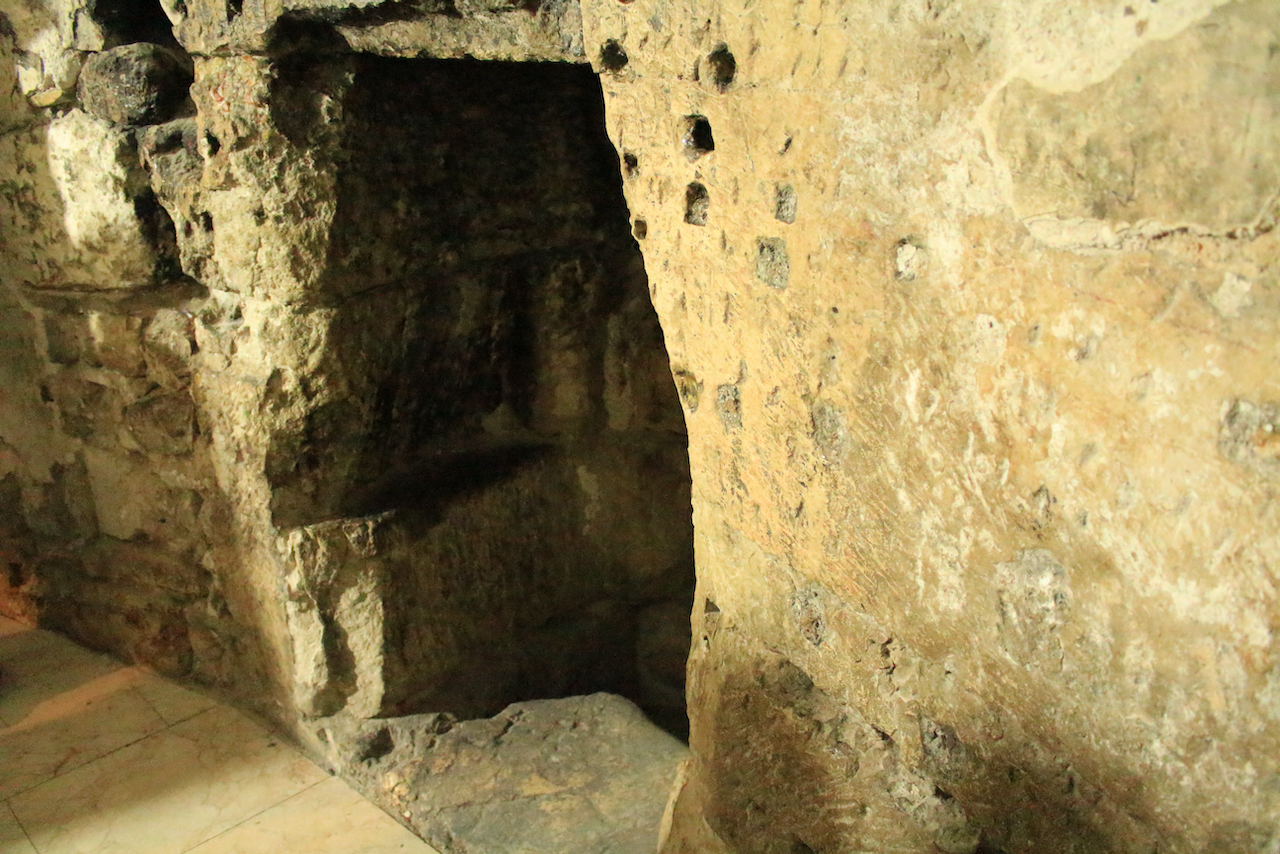“A certain man from Cyrene, Simon, the father of Alexander and Rufus, was passing by on his way in from the country, and they forced him to carry the cross. They brought Jesus to the place called Golgotha (which means ‘the place of the skull’). Then they offered him wine mixed with myrrh, but he did not take it. And they crucified him. Dividing up his clothes, they cast lots to see what each would get.” (Mark 15:21-24 NIV)
The details given leading up to Jesus’ execution are instructive. Even in this short paragraph we find so many details, most of which lead to more questions. Who was Simon? Why mention him and his sons? Where was Golgotha and why was it called that? Why did he refuse a drink before being crucified? What happened to his clothing? For many of these there is no answer and for others we can but speculate.
We wonder why Simon was mentioned by name as well as his sons Alexander and Rufus. Some have suggested – and it makes good sense – that these were known by Christians in the first century because they had become followers of the Messiah. If we had to witness Jesus’ death and then saw that he came back from the dead, we would probably be convinced, too! Simon had a great privilege, although a forced one, to be one of the last to give Jesus assistance.
Most who have researched Roman execution practices believe that the upright of the cross was left in the ground at execution sites. This would mean the condemned had to carry the crossbeam. Thinking practically, it would be almost impossible to carry the entire cross fastened together due to the weight, but to carry the crossbeam, although heavy, would have been possible. But after going through so much abuse including the scourging, Jesus was not in any condition to even carry the crossbeam and had to have help.
How Golgotha, ‘the place of the skull’, was given this name is not known. There are two main suggestions: 1) it was a place of execution and 2) the hill looked like a skull.
There are two sites you can see in Jerusalem that have been claimed to be the site of Golgotha. One is known as ‘The Garden Tomb’ and has a hill adjacent to it that is said to look like a skull, hence the name. But if you see the hill it no longer resembles a skull. It was in the 1800s that people identified this as being the location due to what it looked like. If erosion over the past 150 years have changed the look of the hill, how much more erosion had taken place in the previous 1800 years to cause it to look as it did in the 1800s? The tomb that is found in a garden near the hill also has been dated to at least 200 years before Jesus and some have suggested it was used as early as the 8th century BC. It definitely is not Joseph’s unused tomb. Most likely the site known as ‘The Church of the Holy Sepulchre’ is the correct location, containing both the hill known as Golgotha and first century tombs – it was one of the first sites to be identified with Jesus’ death and burial.
The initial drink of wine mixed with myrrh was refused by Jesus. Although the text doesn’t tell us why we know this drink would have lessened the pain of the crucifixion. It would seem that Jesus was prepared to feel the full effect of death by crucifixion as he paid the price for our sins. Later when offered sour wine, the common drink of soldiers, he accepted it to quench his thirst.
As for his clothing, no one knows what happened to them. What is important is not what happened to the clothes but that Jesus came back to life and now lives. He went through so much physical abuse and torture as he died for our sins – he did all this for you and me. May we give our lives wholeheartedly to him.
Photo by Jon Galloway: First-century tomb in Church of the Holy Sepulchre, Jerusalem.
Readings for next week: Mark 14-16; Acts 1-2
- Do we accept or reject Jesus? - 2026-01-02
- Spending time with outcasts - 2025-12-26
- We harvest what we plant - 2025-12-19
